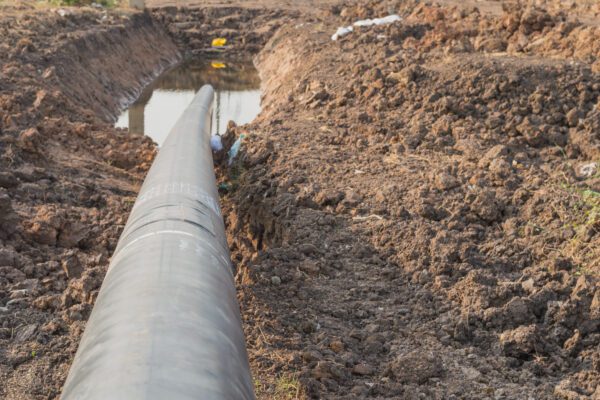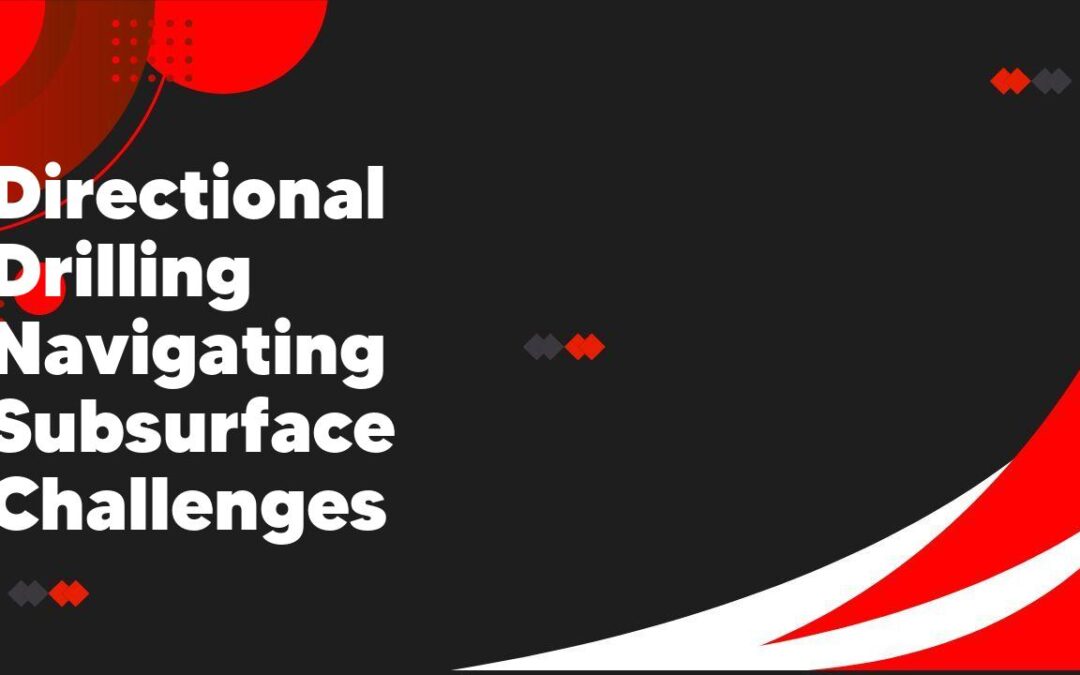Directional drilling is a technique used in the oil and gas industry to navigate through subsurface challenges. It involves using specialized equipment and techniques to drill wells at non-vertical angles, allowing for access to hard-to-reach reserves. This article will explore the various challenges that directional drilling addresses and the advantages it offers in the extraction of oil and gas.
1. Introduction to Directional Drilling: A Promising Solution for Subsurface Challenges
Directional drilling has emerged as a promising solution to the challenges faced in subsurface exploration and extraction. As someone who has worked in the oil and gas industry for over a decade, I have seen firsthand the benefits that directional drilling can provide. By using specialized equipment and techniques, directional drilling allows us to create a curved or horizontal wellbore, enabling access to previously untapped reserves. This technology not only increases productivity but also reduces the environmental impact by minimizing the disturbance of land and reducing the need for multiple drilling rigs. With its potential to overcome subsurface challenges, directional drilling is transforming the way we extract resources from the earth, making it a vital tool in the energy industry.
2. Understanding the Need for Directional Drilling: Overcoming Geological Constraints

As a professional in the field of directional drilling, I understand the significance of overcoming geological constraints. The need for directional drilling arises when traditional drilling methods face limitations due to the complex nature of the geology. It is imperative for us to have a thorough understanding of the geological constraints present in a particular area before commencing any drilling operations. By carefully evaluating the geological structure, we can determine the best course of action and effectively navigate through challenging formations, such as faults, fractures, or uneven rock layers. This understanding allows us to plan and execute directional drilling strategies that maximize productivity while minimizing risks, ultimately leading to successful and efficient drilling operations.
3. Key Techniques and Technologies in Directional Drilling: Enhancing Efficiency and Precision
In this article, I will be discussing the key techniques and technologies used in directional drilling that have helped enhance efficiency and precision in the oil and gas industry. Directional drilling is the process of drilling wells at various angles, rather than just straight down, to reach oil and gas reserves that cannot be accessed using conventional drilling methods. Over the years, advancements in technology and techniques have revolutionized the field of directional drilling, allowing for more accurate wellbore placement and ultimately increasing production rates. Some of the key techniques and technologies I will be discussing include rotary steerable systems, measurement-while-drilling tools, and enhanced imaging techniques. These advancements have not only made drilling operations more efficient and cost-effective but have also significantly reduced the environmental impact.
4. Benefits of Directional Drilling: Economic and Environmental Advantages
As a female in the field of engineering, I am well aware of the numerous benefits of directional drilling. Firstly, this technique brings about significant economic advantages. By minimizing the need for extensive excavation, directional drilling reduces labor costs and equipment requirements, resulting in overall cost savings for projects. Additionally, this method allows for the completion of complex and challenging drilling tasks, enhancing productivity and efficiency. Moreover, directional drilling also offers notable environmental advantages. By reducing the surface footprint and disturbance to the surrounding environment, this technique minimizes ecosystem disruption and preserves natural habitats. This not only benefits local flora and fauna but also helps maintain a sustainable environment for future generations. Overall, the economic and environmental advantages of directional drilling make it a valuable and responsible choice in the field of engineering.
5. Case Studies: Successful Applications of Directional Drilling in Various Industries
In my experience working as a directional drilling engineer, I have witnessed numerous successful applications of this technology across various industries. One such case was in the oil and gas sector, where directional drilling proved to be a game-changer. By drilling at an angle, we were able to access oil and gas reserves that would have otherwise been inaccessible using conventional drilling methods. This not only increased production rates but also minimized environmental impact by reducing the need for multiple drilling locations. Additionally, directional drilling has been successfully applied in the telecommunications industry, allowing for the installation of underground fiber optic cables with minimal disruption. These case studies highlight the versatility and effectiveness of directional drilling, making it an invaluable tool in a range of industries.
6. Future Trends in Directional Drilling: Innovations and Advancements Shaping the Industry
In my opinion, the future of directional drilling holds exciting innovations and advancements that will revolutionize the industry. One trend that is likely to dominate is the development of smarter and more efficient drilling technologies. With the advancements in sensors and data analytics, companies will be able to gather real-time information about the drilling process and make more informed decisions. This will not only increase drilling speeds but also improve accuracy and reduce costs. Another trend that will shape the industry is the focus on sustainability. As the world becomes more conscious of environmental issues, there will be a greater demand for drilling techniques that have minimal impact on the ecosystem. This will drive the development of eco-friendly drilling methods and equipment. Overall, the future of directional drilling looks promising, with advancements in technology and a growing emphasis on sustainability.
Conclusion
In conclusion, directional drilling is a vital technology that allows for the efficient extraction of resources from the subsurface. It offers a solution to the challenges posed by complex geology and environmental restrictions. With ongoing advancements in directional drilling techniques and technologies, the industry is poised for further growth and success in the future.
What is directional drilling?
Directional drilling is a technique used in the oil and gas industry to drill wells at various angles, rather than vertically. It allows for drilling in complex areas, such as those with multiple targets or obstacles.
How does directional drilling work?
Directional drilling involves the use of specialized equipment and techniques to steer the drill bit in a desired direction. Measurements are taken while drilling to ensure accurate navigation through the subsurface formations.
What are the benefits of directional drilling?
Directional drilling offers several advantages, including increased access to reservoirs, reduced environmental impact, enhanced wellbore stability, and improved well productivity. It also allows for better utilization of surface facilities.
What challenges are associated with directional drilling?
Directional drilling can present various challenges, such as maintaining accurate wellbore positioning, managing wellbore stability in complex formations, and dealing with downhole equipment failures. It also requires skilled personnel and advanced technology.
What industries benefit from directional drilling?
Directional drilling is primarily used in the oil and gas industry for exploration and production activities. However, it is also utilized in other sectors, including geothermal energy, water well drilling, and underground construction projects.
What are some commonly used tools in directional drilling?
There are several tools and technologies used in directional drilling, including mud motors, rotary steerable systems, measurement-while-drilling (MWD) tools, and logging-while-drilling (LWD) tools. These instruments assist in steering the drill bit and collecting data during the drilling process.

